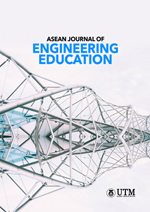Experience and Student Feedback from Teaching with Guided Slides on a Tablet PC
Keywords:
Active learning, guided slides, note‐taking, tablet PCAbstract
Blackboard/overhead projector and PowerPoint presentations are two conventional lecturing techniques used in most of the undergraduate classes. In this study a new technique, namely guided slides with tablet PC, was implemented in a typical engineering course. Guided slides are a set of incomplete slides used in class. However, guided slides do not include every detail of the contents; they are designed to be completed by the lecturer’s handwriting during the lecture via a tablet PC. The main objective of the present study is to gather students’ responses to the proposed technique compared with the
conventional lecturing techniques. The results are then analyzed via the ARCS motivation model. Questionnaires were issued to students in the class to assess the advantages and limitations of all three techniques. A focus group was also held at the end of the semester to obtain qualitative data and an explanation of the results from the questionnaire. The results confirmed the speculated limitations of the blackboard and PowerPoint techniques. The application of GS/T was a success in terms of students’ utilization and satisfaction. With GS/T, the class moved from a passive note‐taking to an active
learning class. Students strongly favored the feeling of a “live” lecture offered by real‐time handwriting. Many positive attributes of GS/T technique were unveiled, especially in regard to aspects of attention and relevance. Despite its popularity, PowerPoint scored poorly in the confidence and satisfaction aspects. Instead, GS/T was found to achieve face-to‐face communication and instill mandatory class participation.


















